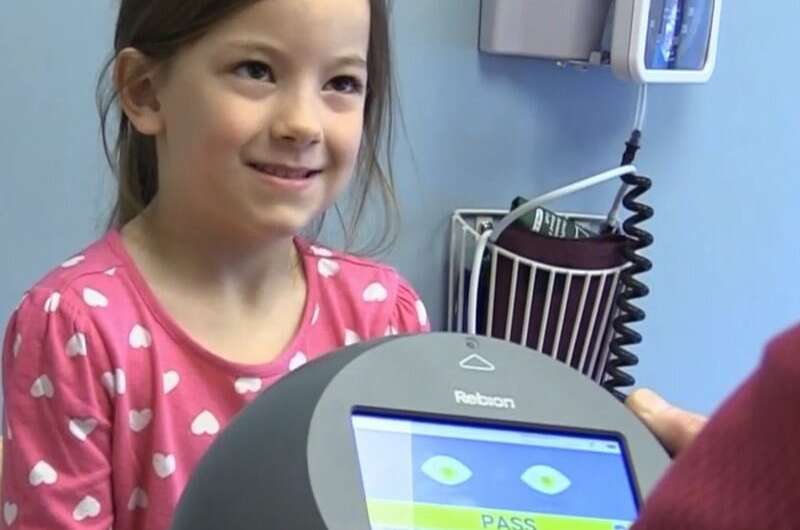
A handheld screening device that detects subtle misalignment of the eyes accurately identifies children with amblyopia (lazy eye), according to a study published in the Journal of the American Association for Pediatric Ophthalmology and Strabismus.
“The findings suggest that pediatricians and other primary care providers could use the device to catch amblyopia at an early age when it’s easier to treat,” said Michael F. Chiang, M.D., director of the National Eye Institute (NEI), which supported research and development of the device. NEI is part of the National Institutes of Health.
Amblyopia is impaired vision in one eye and it is the leading cause of preventable monocular (single eye) vision loss, affecting three of every 100 children in the U.S.
During early childhood, cloridrato de metformina da gases our developing brains learn how to take images from each eye and fuse them into a single image to produce vision. Amblyopia develops when misalignment of the eyes (strabismus) or decreased acuity in one eye interferes with the brain’s ability to process visual information from both eyes, causing it to favor one eye. Once a child is visually mature, vision lost in the weaker eye cannot be corrected with glasses or contact lenses.
Children with amblyopia can suffer from poor school performance and impairments in depth perception and fine motor skills such as handwriting and other hand-eye coordinated activities.
Treatment of amblyopia generally involves placing a patch over the good eye to improve vision in the weaker eye. Patching is less successful as children get older, making early detection crucial. However, this depends on timely diagnosis by the child’s doctor, and most pediatricians are equipped only for basic eye chart vision screening tests, which are not useful for detecting amblyopia in very young children.
The screening device works by assessing the eyes’ ability to fixate together. Held 14 inches from the eyes, the child fixates on a smiley face while the device simultaneously scans both retinas. The scan involves a polarized laser that probes nerve fibers in an area of the light-sensing retina called the fovea, which is important for central vision. Even a subtle misalignment of the foveas—called small-angle strabismus—can interfere with the brain’s ability to integrate images from both eyes. The device calculates a binocularity score that indicates whether the child requires referral to an eye health physician for further investigation.
For the study, 300 children, ages 2 to 6 years, with no known eye disorders were recruited during previously scheduled visits to two Kaiser Permanente Southern California pediatric clinics.
Two non-ophthalmic research associates who were trained how to use the device screened each child, and the results were compared against those from an eye examination performed by a pediatric ophthalmologist who was unaware of the device’s results. The device detected all six cases (100% sensitivity) of amblyopia and/or strabismus that had been confirmed by the professional eye examination. The device also flagged an additional 45 children as possibly having amblyopia and/or strabismus who were later determined by the eye examination to be normal (85% specificity).
“In the hands of a trained user, it takes 28 seconds to sit the child down, perform the test, and record the results—provided that the child cooperates—which is an important consideration for its adoption in busy pediatric care settings,” said the study’s co-lead investigator, Shaival S. Shah, M.D., a pediatric ophthalmologist at Kaiser Permanente based in Tustin Ranch, California. The test itself requires just 2.5 seconds of a child’s attention.
A key limitation of the study was that the device was not compared with currently available photo-screening devices. Such devices detect differences in light reflexes in each eye and produce images that can help detect risk factors for amblyopia, but not amblyopia itself, which can result in both over and under detection of amblyopia.
By contrast, the pediatric vision scanner detects the presence of amblyopia as opposed to the risk factors of amblyopia, which may lead to fewer unnecessary referrals to pediatric ophthalmologists.
The pediatric vision screener tested in the study is a prototype of blinq, a device that was cleared by the U.S. Food and Drug Administration in 2016.
Source: Read Full Article
